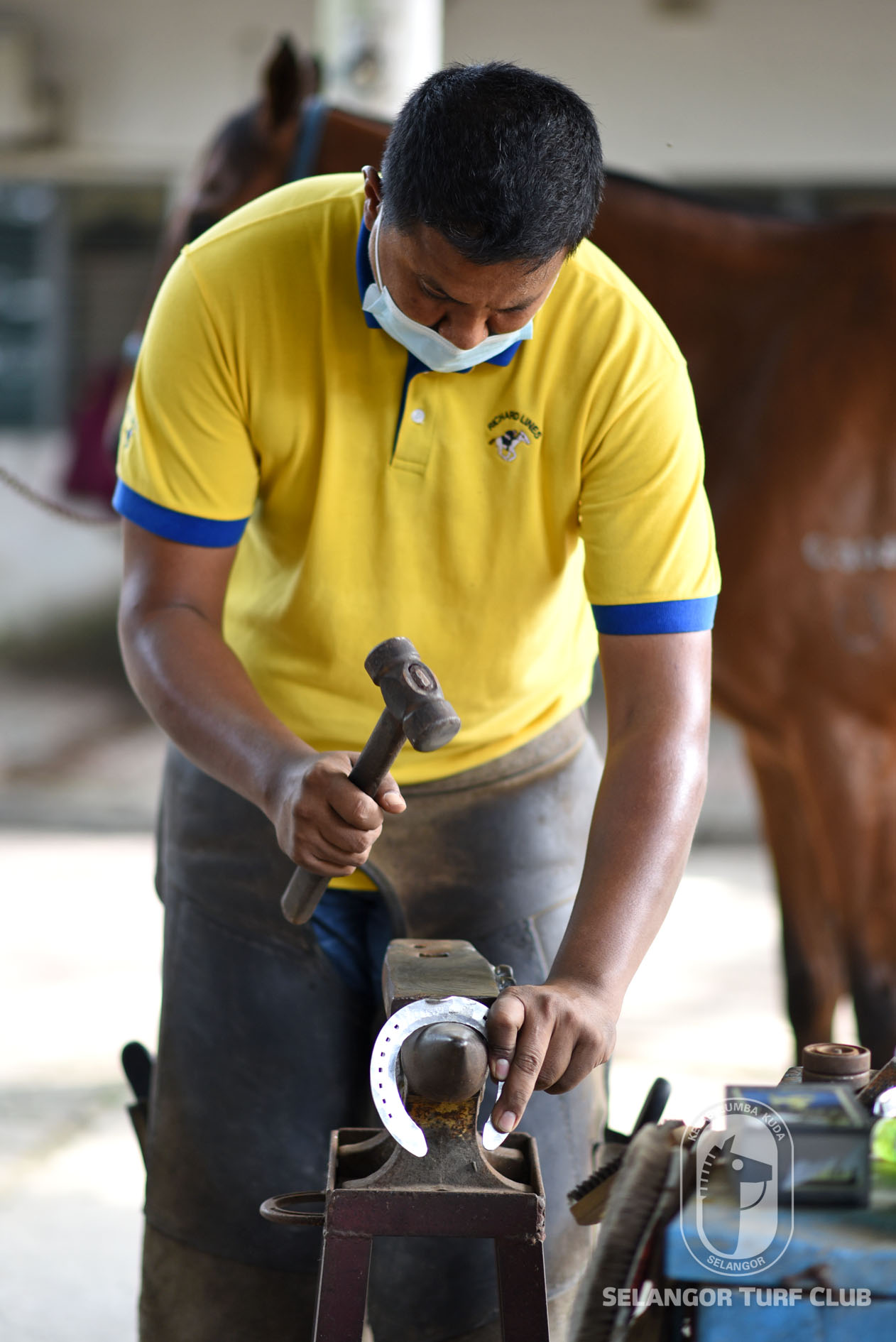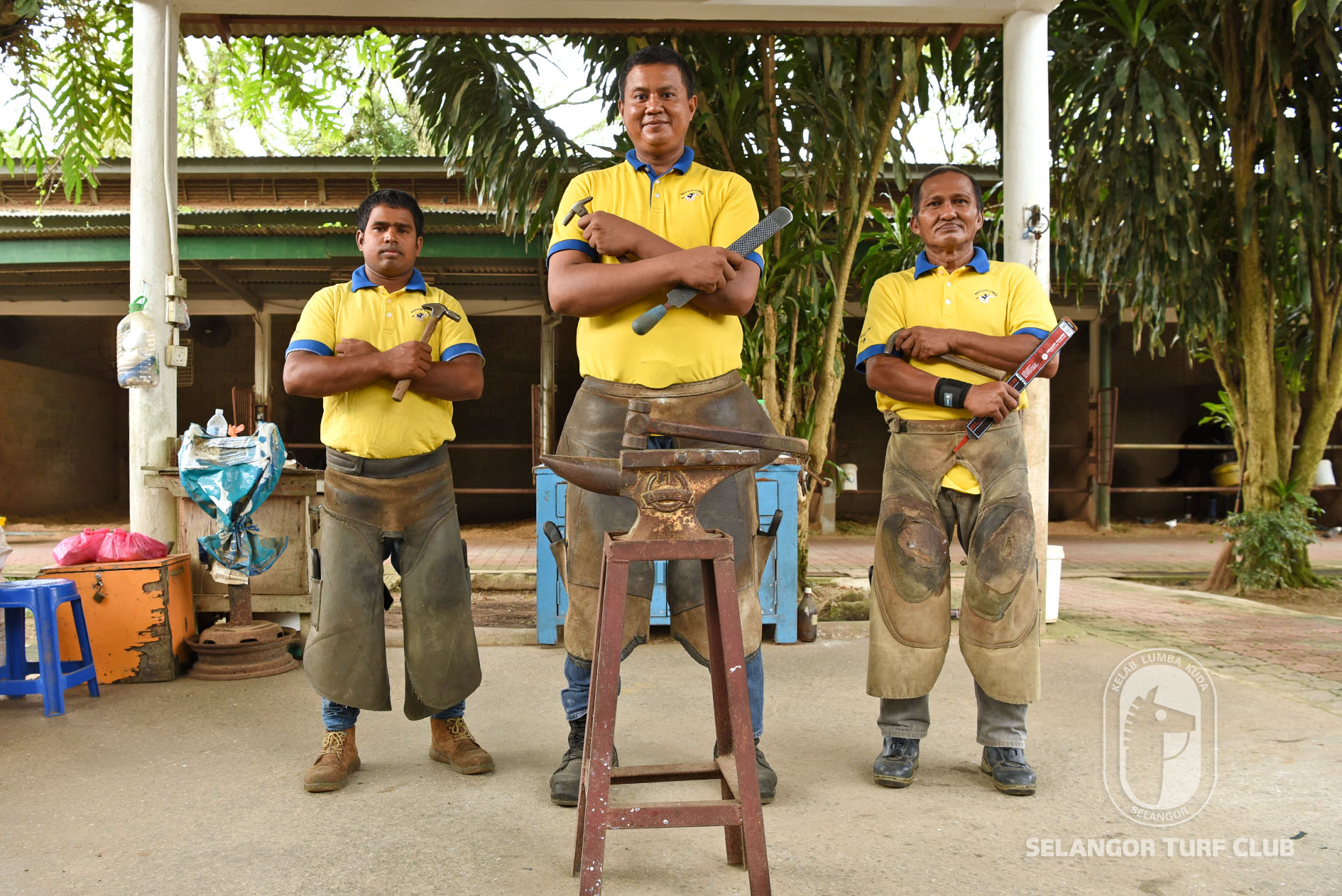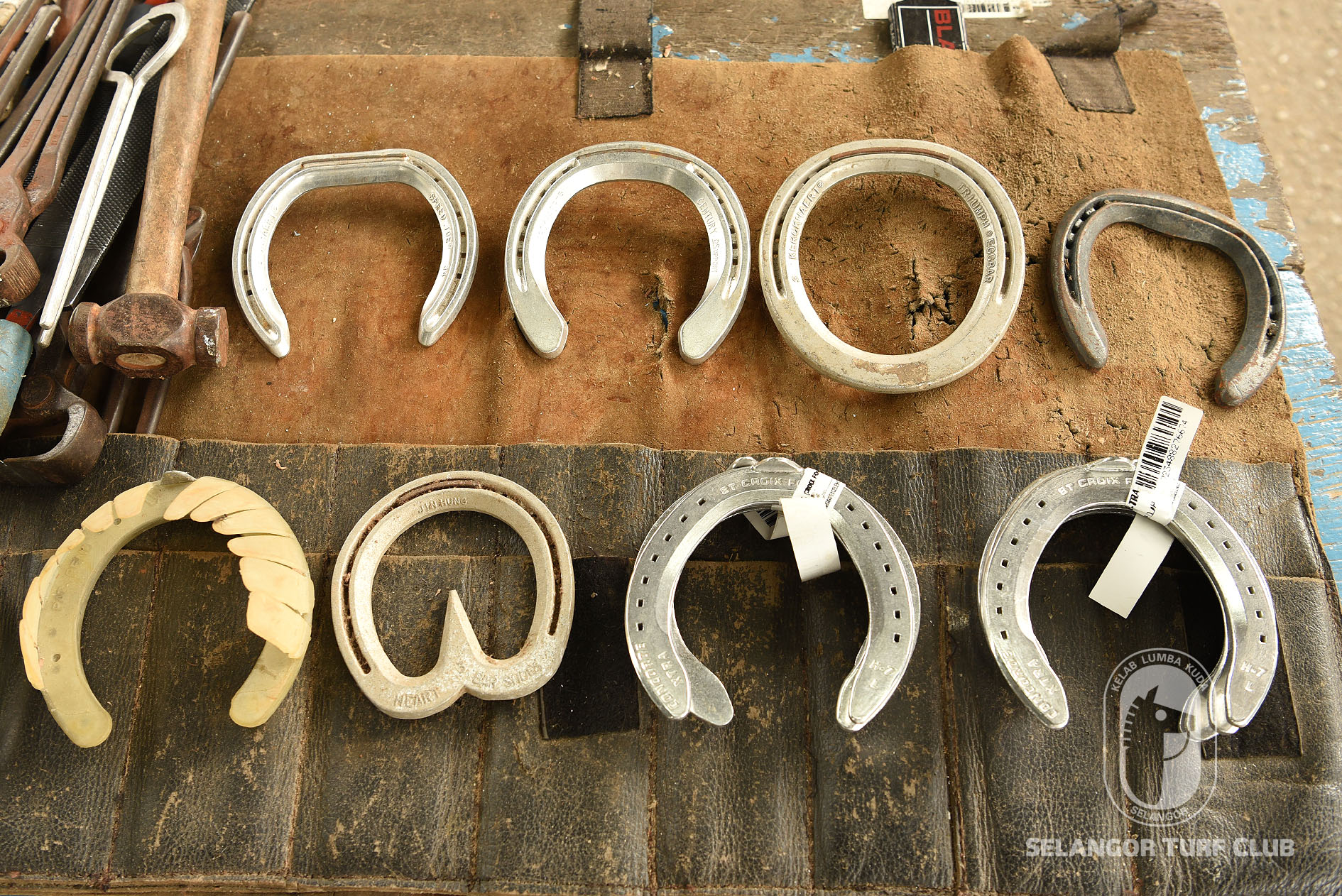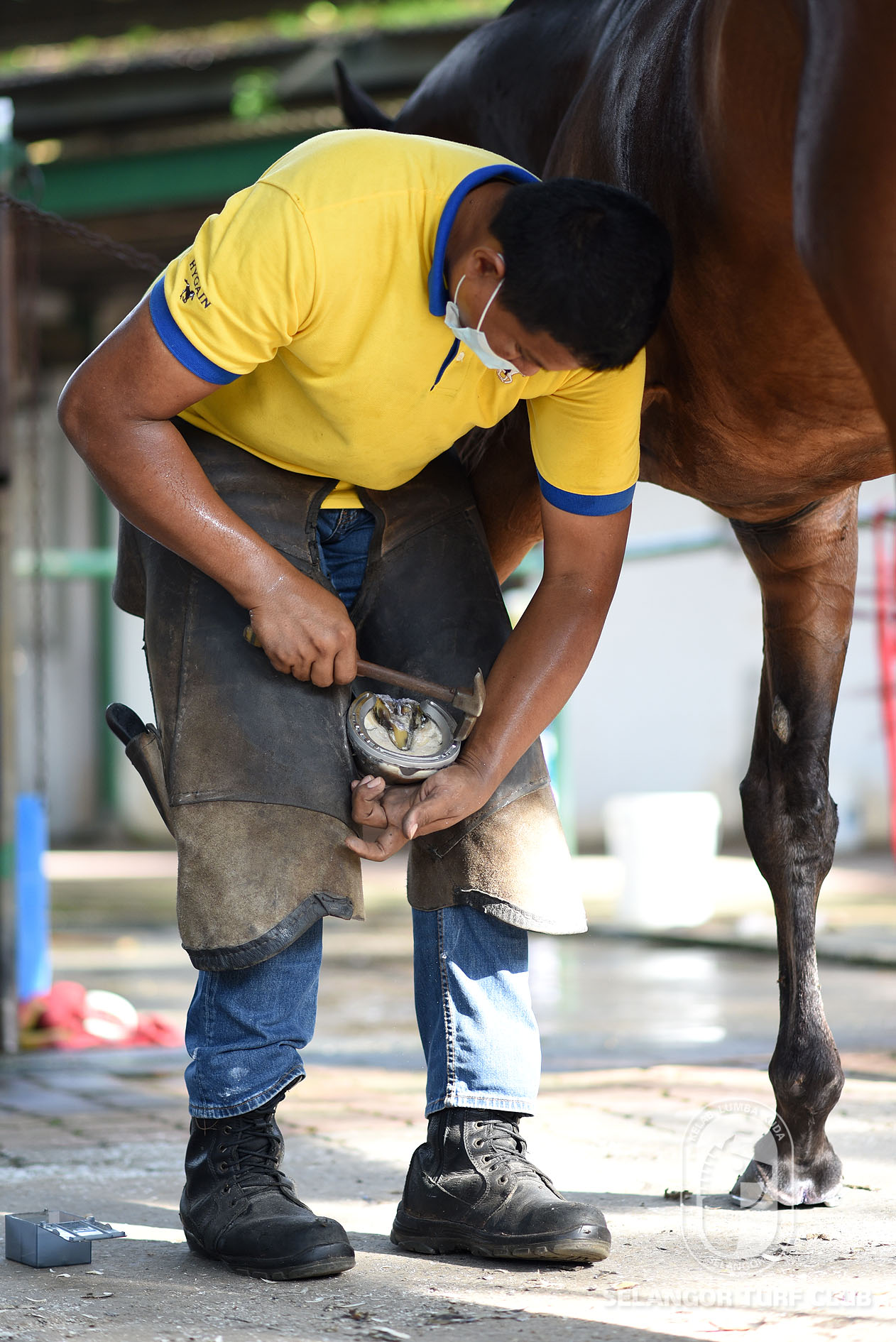Kamal: My pride and passion for horseshoeing
 Farriers play an important role in the horse racing circuit as they specialise in shoeing horses and caring for their hooves which support the whole weight of a horse. Besides that, farriers also clean, trim and shape horse hooves which grow continuously just like our fingernails and toenails.
Farriers play an important role in the horse racing circuit as they specialise in shoeing horses and caring for their hooves which support the whole weight of a horse. Besides that, farriers also clean, trim and shape horse hooves which grow continuously just like our fingernails and toenails.
This field which is well-known in the equine industry caught the attention of young Kamal Bahrain bin Mohamed who lived in Ipoh near the Perak Turf Club. As a little boy, he often spent long hours at the stables and developed a great attraction for horses and decided that his future was going to be at the stables.
He left school and at 13 he worked as a groom which required him to carry out certain duties for the horses. Mucking out the stalls, preparing feed and distributing them, filling water containers, bandaging legs and administering basic first aid for cuts and scrapes are some of the tasks that were assigned to him. During this period, he was also learning to become a farrier by assisting Encik Roslan who was in this field.
Four years later at age 17 with the skills that he had acquired, he began assisting in shoeing the horses. Although there are no training institutes in Malaysia to learn this trade, in 2002, Kamal was able to fine tune the skills of this trade when the Malaysian Equine Council invited Ian Johnson an expert farrier from Australia to further guide him professionally in this field. The young Kamal then became a freelance farrier as he began to provide his services to the stables in Perak Turf Club.
In the year 2015 at the recommendation of Encik M Zaidi who was an experienced farrier, Kamal got employed as a farrier at Richard Lines’ stable at Selangor Turf Club to take care of his horses. He is assisted by Encik Rosli and Encik Saddam who also have many years of experience in this field. The three of them take care of the ninety horses at the stable.
 Watching Kamal and his assistants at work one can’t help but feel great admiration for them as their skilful hands began the shoeing process while the horse remain calm and composed as they took turns to work on each of its legs. Before the shoeing process, the old shoe is removed using pincers and the hoof wall is trimmed to the desired length with nippers, this process is akin to a manicure in human fingernails except it is on a much larger scale. Then the shoes are measured according to the hoof and bent to the correct shape using a hammer and anvil, this is referred to as a cold shoe process as it doesn’t need heating which is a time consuming process.
Watching Kamal and his assistants at work one can’t help but feel great admiration for them as their skilful hands began the shoeing process while the horse remain calm and composed as they took turns to work on each of its legs. Before the shoeing process, the old shoe is removed using pincers and the hoof wall is trimmed to the desired length with nippers, this process is akin to a manicure in human fingernails except it is on a much larger scale. Then the shoes are measured according to the hoof and bent to the correct shape using a hammer and anvil, this is referred to as a cold shoe process as it doesn’t need heating which is a time consuming process.
Richard Lines who was also present at the demonstration, complimented his experienced farriers on their knowledge, skills and expertise in this field which is an essential aspect of horse care. “I have absolute trust in their competence in this field and I can just trust them to see to the specific needs of each of the horses in my stable” affirmed Lines confidently.
 Kamal showed the assortment of horseshoes that are being used at the stable and explained that the horseshoes are available in different weights, sizes and designs that can be used with minimal reshaping. He explained that horses that are racing use horseshoes made of aluminium because they are light and when doing track work they use horseshoes made of iron. He further added that there are also horses with special needs that need horseshoes that are customised for their individual needs.
Kamal showed the assortment of horseshoes that are being used at the stable and explained that the horseshoes are available in different weights, sizes and designs that can be used with minimal reshaping. He explained that horses that are racing use horseshoes made of aluminium because they are light and when doing track work they use horseshoes made of iron. He further added that there are also horses with special needs that need horseshoes that are customised for their individual needs.
“My assistants and I have to check the horses’ hooves every day,” Kamal disclosed to explain the significance of his job. Kamal also said that they have to replace the horseshoes once or twice a month according to the need of the horses. He further alleged that it is the farrier’s responsibility to ensure that the horses’ hooves are well maintained with perfectly fitted shoes that are comfortable and well balanced to perform accordingly.
When asked how long it takes to shoe a horse, Kamal said that the least is half an hour if the horse is calm and in a good mood and more than an hour if the horse is restless. Therefore, it is important for the farriers to create a loving and trusting bond with these gentle yet fiery racers who have to be stroked and pacified to calm them down before the shoeing process takes place.
Kamal, now 40 and father of four children has been in this field for the past 27 years and he has won the farrier competition organised by the Malaysian Equine Council in the years 2005, 2006 and 2009. The farriers are judged by the time taken and neatness of their task as they mould a piece of iron bar into a horseshoe and with the nail holes placed appropriately on them. Kamal claimed that he was able to win as he had put in many hours trying to perfect his skill prior to the competition.
 “I want my children to know how I earn my money,” Kamal said with so much of pride for his job. He said that his job is physically demanding as he has to stand and bend for long hours while lifting the horse’s leg. He is pleased that his wife and children who still live in Ipoh love to visit him at the stable and watch him at work although they dislike the smell around them.
“I want my children to know how I earn my money,” Kamal said with so much of pride for his job. He said that his job is physically demanding as he has to stand and bend for long hours while lifting the horse’s leg. He is pleased that his wife and children who still live in Ipoh love to visit him at the stable and watch him at work although they dislike the smell around them.
There are many superstitious beliefs surrounding the horseshoes that have been passed down for ages. It is believed that the horseshoe that is made of iron repels evil spirits therefore people placed it at the entrance of their homes to protect themselves and it is also regarded as a good luck charm and can be seen on greeting cards and worn on necklaces or bracelets.
Nevertheless, what does the future hold for Kamal who has been working with these good luck charms for almost all his life? “I would like to pass on this skill and knowledge of shoeing horses that I have learnt to those who wish to learn it,” Kamal declared with such passion for the profession that he had grown to love and can still picture himself in it for many more years to come
